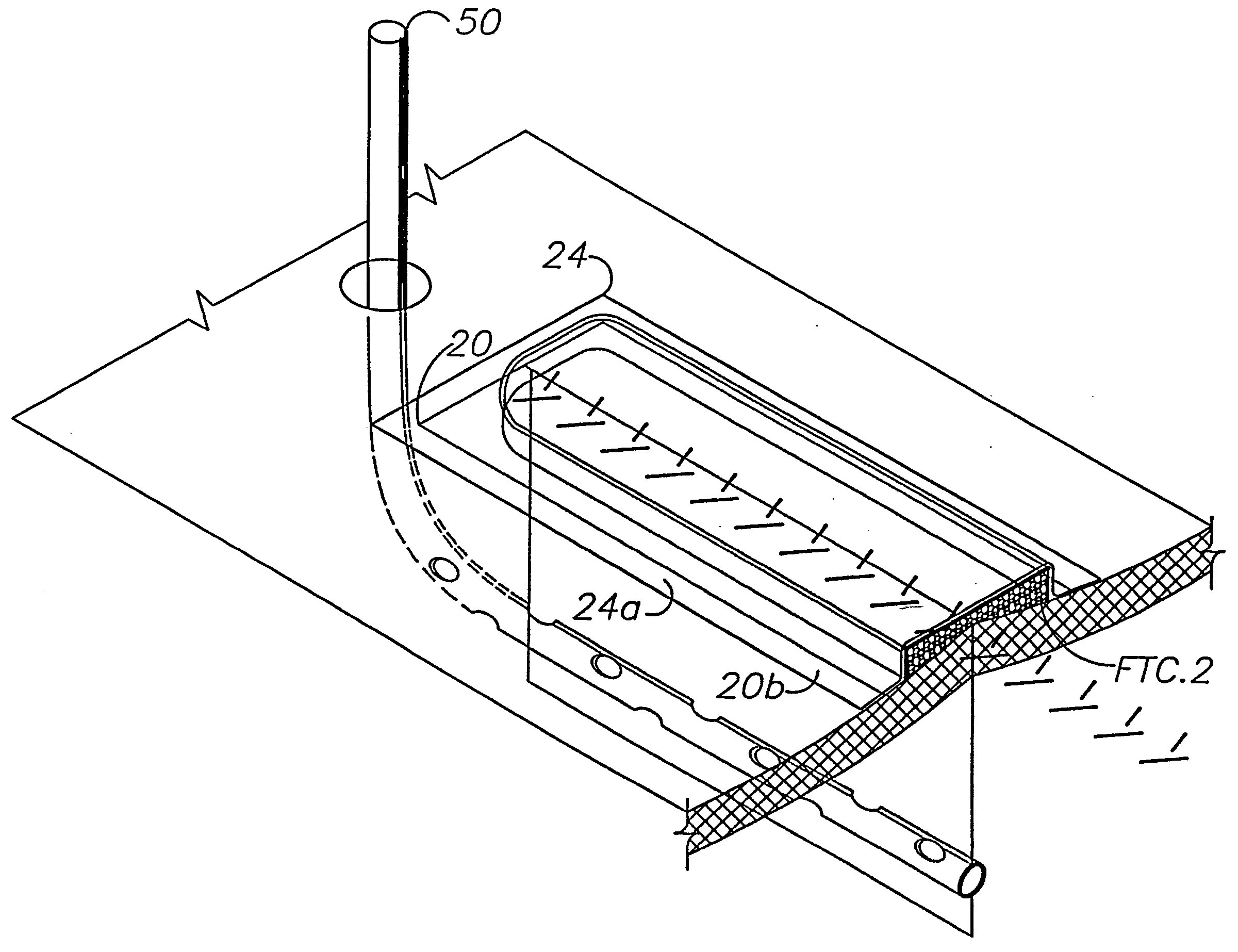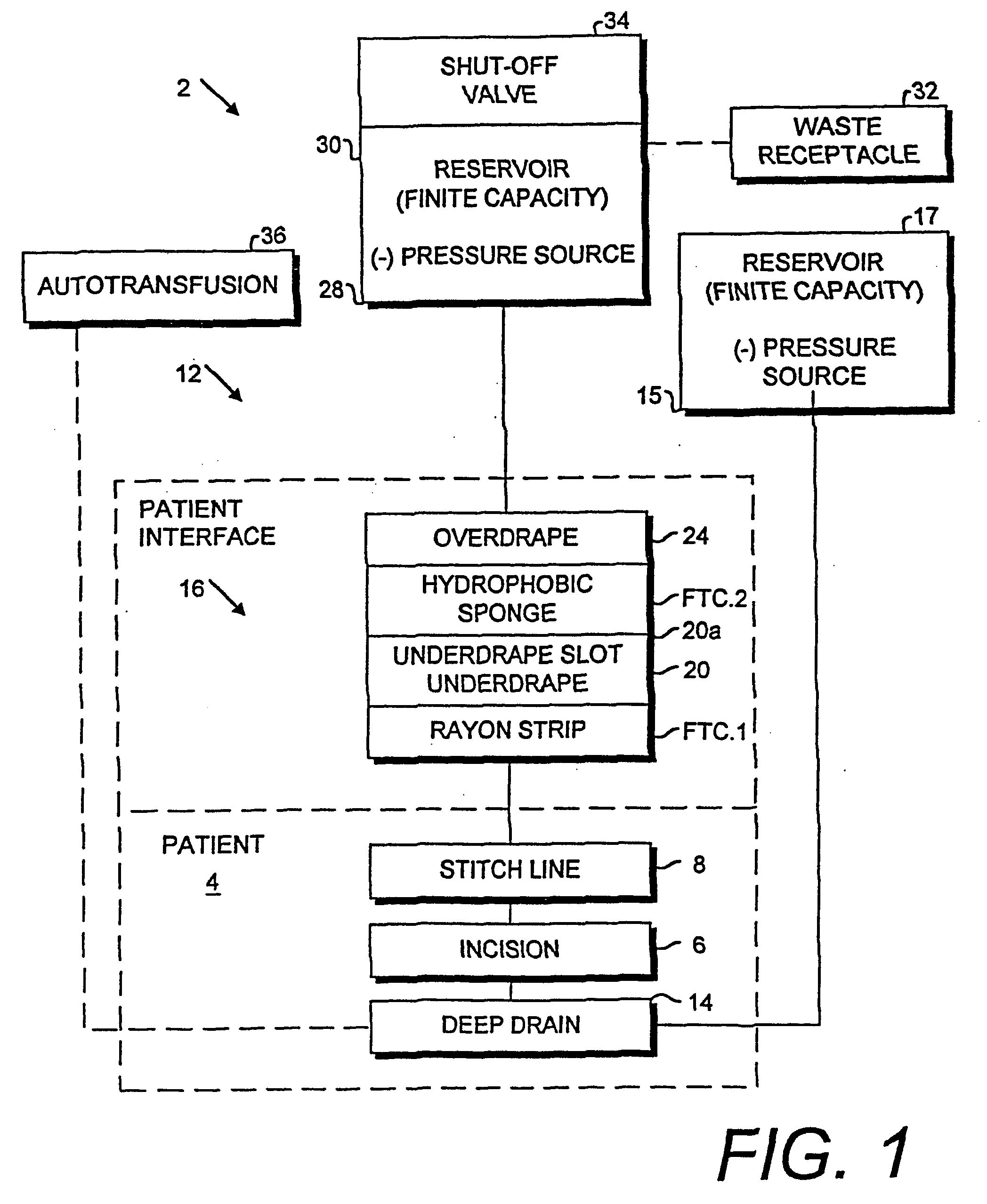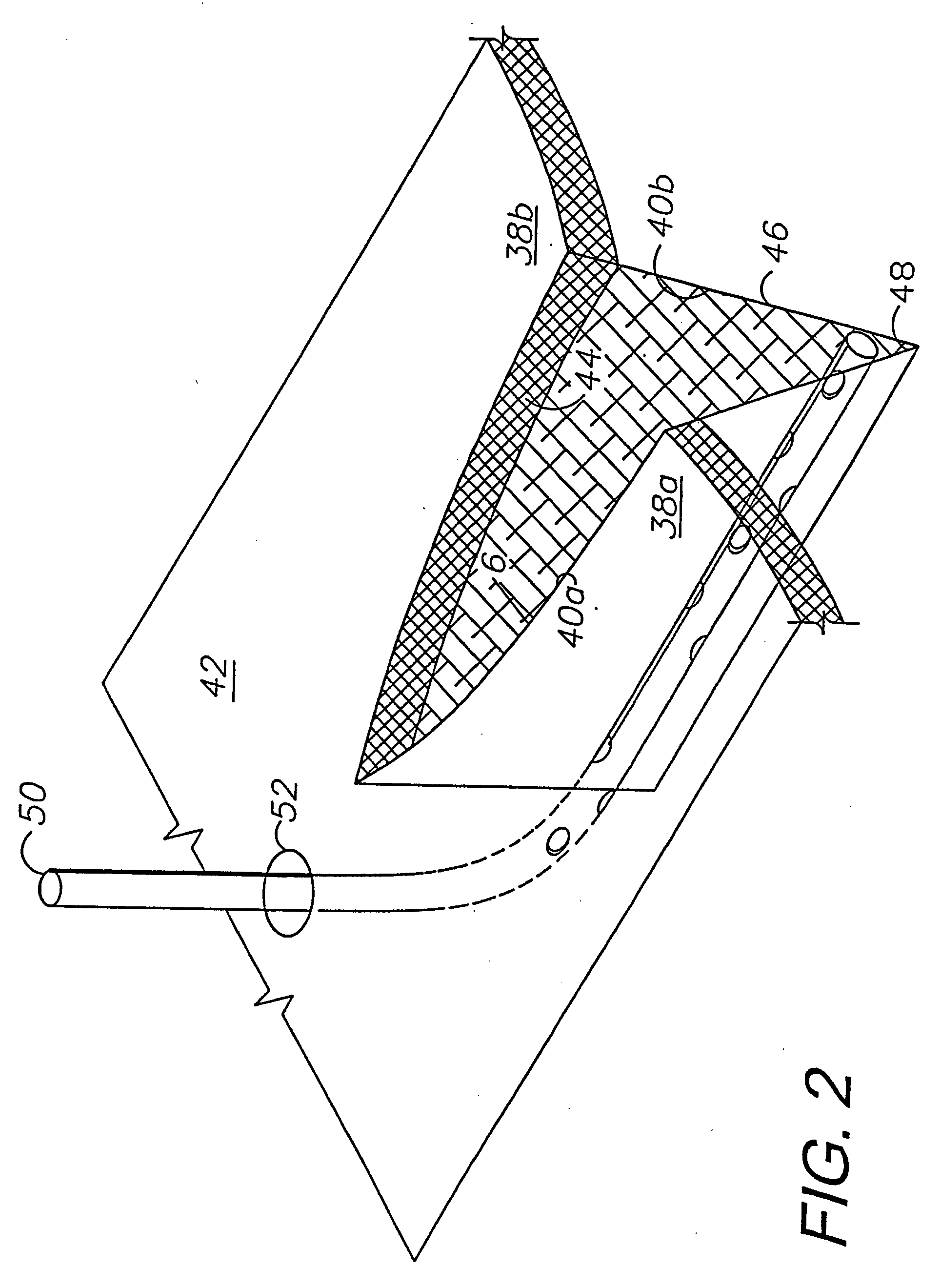Externally-applied patient interface system and method
a patient interface and external application technology, applied in the field of external application of patient interface system and method, can solve the problems of tissue separation, dead space problems more apt to occur, and deeper incisions may well require not only skin surface closure, but also time-consuming placement of multiple layers of sutures, etc., to enhance the closure of separated tissue portions
- Summary
- Abstract
- Description
- Claims
- Application Information
AI Technical Summary
Benefits of technology
Problems solved by technology
Method used
Image
Examples
embodiment dressing assembly 802
XII. Alternative Embodiment Dressing Assembly 802
[0158] A dressing assembly 802 comprising an alternative embodiment of the present invention is shown in FIG. 41 and includes a foam piece 804 in a sheath 806 adapted for opening and closing through a reclosable seal strip 808. The sheath 806 includes an upper drape portion 810, which can comprise a suitable semi-permeable or impervious drape material. The sheath 806 includes a perimeter 812, which can be provided with an optional adhesive perimeter seal 813 adapted for providing a relatively fluid-tight seal around the sheath 806. The perimeter seal 813 can be relatively narrow in order to minimize patient discomfort, skin maceration, etc. A bottom panel 814 comprises a suitable wicking material, such as rayon, and extends to the sheath perimeter 812. The materials comprising the dressing 802 can be chosen for permeability or occlusiveness, biocompatibility, hydrophobic or hydrophilic reaction to liquids, bacteriastatic and antimicro...
PUM
 Login to View More
Login to View More Abstract
Description
Claims
Application Information
 Login to View More
Login to View More - R&D
- Intellectual Property
- Life Sciences
- Materials
- Tech Scout
- Unparalleled Data Quality
- Higher Quality Content
- 60% Fewer Hallucinations
Browse by: Latest US Patents, China's latest patents, Technical Efficacy Thesaurus, Application Domain, Technology Topic, Popular Technical Reports.
© 2025 PatSnap. All rights reserved.Legal|Privacy policy|Modern Slavery Act Transparency Statement|Sitemap|About US| Contact US: help@patsnap.com



